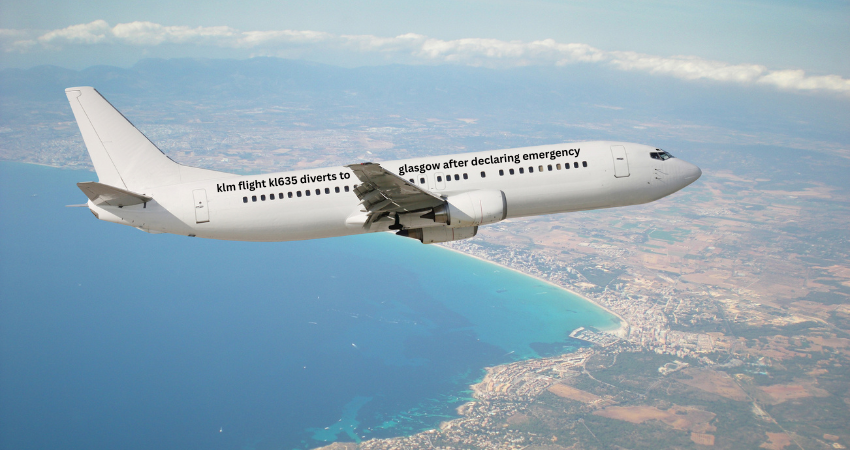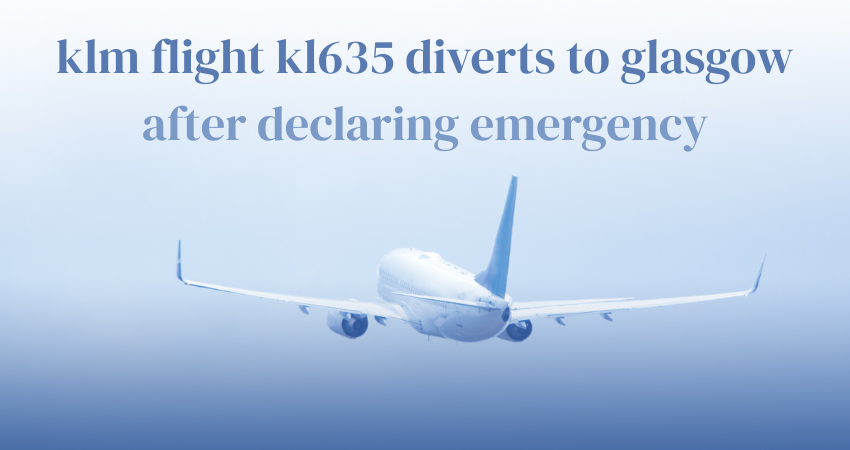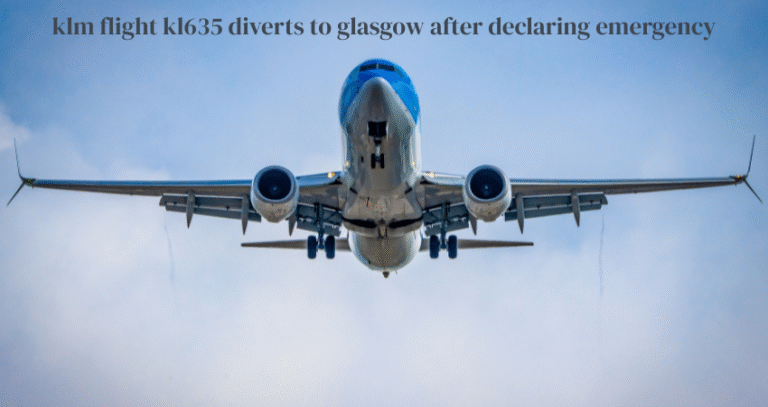Klm flight kl635 diverts to glasgow after declaring emergency, en route from Amsterdam to Calgary, made headlines recently after it diverted to Glasgow International Airport mid-flight following the declaration of an emergency. While everyone onboard remained safe, the sudden change in course sparked concern, curiosity, and many questions from the public and aviation watchers alike.
So, what exactly happened on this flight that led to an emergency diversion? Let’s break it all down.
Overview of the Flight
Klm flight kl635 diverts to glasgow after declaring emergency is a regularly scheduled KLM Royal Dutch Airlines service from Amsterdam Schiphol Airport (AMS) to Calgary International Airport (YYC) in Canada. The aircraft typically used for this route is a Boeing 787 Dreamliner, known for its long-range capability and modern systems.
On this particular day, the flight took off without issues, with over 200 passengers and crew onboard, expecting a smooth transatlantic journey.
The Emergency Declaration
Roughly halfway through the flight, KL635’s pilots contacted air traffic control (ATC) and declared a general emergency using the internationally recognized “7700” squawk code on their transponder — an automatic red flag to all controllers monitoring the flight.
The exact nature of the emergency hasn’t been publicly disclosed yet. However, it is common for emergencies to be caused by:
-
Technical faults (e.g., engine anomaly, hydraulic failure)
-
Medical situations (e.g., passenger illness)
-
Cabin pressurization issues
Diversion to Glasgow Airport
Once the emergency was declared, a quick and strategic decision was made to divert the aircraft to Glasgow International Airport (GLA). Why Glasgow? Because it:
-
Had the runway capacity to accommodate a Boeing 787
-
Was geographically the nearest major airport
-
Had emergency services on standby
The flight landed safely without further incident, and emergency crews met the aircraft as a precaution.

Safe Landing and Passenger Safety
Thanks to the swift action of the flight crew and the ground team in Glasgow, KL635 touched down without a hitch.
There were:
-
No reported injuries
-
All passengers and crew accounted for
-
No damage to the aircraft
Airport officials coordinated with the airline to handle disembarkation and arrangements for affected passengers.
Reactions from Authorities and KLM
Shortly after the incident, KLM issued a public statement confirming the diversion and emphasizing the safety of all onboard. The statement reassured that:
“The crew followed standard procedures and safely landed the aircraft at Glasgow. Our passengers were looked after and will continue their journey as soon as possible.”
The Dutch aviation authority and British Civil Aviation Authority are also expected to review the incident as part of standard protocol.
Technical Analysis of the Incident
Though KLM has not revealed technical specifics, aviation analysts monitoring the flight noted that the aircraft:
-
Was flying at cruising altitude before initiating descent
-
Made a steady, controlled approach to Glasgow
-
Did not indicate signs of rapid decompression or structural issues
Data from FlightRadar24 showed a standard emergency diversion trajectory.
Weather and External Conditions
At the time of diversion, weather conditions over the North Atlantic were reported as moderately turbulent, but not extreme. Glasgow’s weather was clear, allowing for a smooth landing.
Thus, weather likely was not a contributing factor to the emergency decision.
Historical Context
KLM, one of the oldest airlines in operation, has a strong reputation for safety. Incidents like this are:
-
Rare
-
Usually precautionary
-
Handled professionally and without panic
KL635 specifically has had no prior emergency history, which makes this incident an outlier rather than a trend.
Passenger Experience
Multiple passengers shared their experiences on social media, saying that the crew communicated well, and though there was a brief moment of concern, it was handled calmly and professionally.
On landing, passengers were:
-
Given food and water
-
Kept informed about the next steps
-
Provided hotel accommodations if rebooking wasn’t immediate
Impact on Flight Schedule
As with any diversion:
-
KL635’s arrival in Calgary was delayed by several hours
-
Passengers with connections had to be rebooked
-
Ground teams worked quickly to minimize further disruption
Some passengers were flown to Calgary later that same day, while others traveled the next morning.
Emergency Protocols in Aviation
Airline crews are rigorously trained for emergencies. When something goes wrong mid-air, pilots:
-
Declare an emergency (squawk 7700)
-
Consult checklists
-
Coordinate with ATC
-
Prepare the cabin and passengers
In this case, the system worked exactly as designed.
Media Coverage and Public Reaction
Within minutes of the squawk 7700, aviation Twitter accounts and tracking services lit up. Media outlets picked up the story quickly, highlighting:
-
The quick thinking of the pilots
-
The professionalism of Glasgow Airport
-
Public interest in aviation safety
While some feared the worst, most responses praised the outcome.

What Happens Next
Now that the aircraft is safely on the ground:
-
A technical inspection is being conducted
-
Findings will be reported to aviation authorities
-
If needed, further investigation will follow
All findings will help prevent similar occurrences in the future.
Lessons Learned
From this event, a few important takeaways:
-
Diversions are a safety feature, not a failure
-
Flight crews are highly trained for the unexpected
-
Communication and transparency make a huge difference for passengers
Conclusion
Klm flight kl635 diverts to glasgow after declaring emergency’s diversion to Glasgow may have startled some, but it’s a powerful reminder of just how well modern aviation handles emergencies. In the face of uncertainty, the crew acted with precision, and passengers arrived safely — which is always the top priority. Aviation continues to be one of the safest modes of travel, and situations like this prove why.
FAQs
1. Why do planes divert mid-flight?
Planes divert due to emergencies like technical faults, medical issues, or unsafe conditions at the destination.
2. What’s the protocol when a flight declares an emergency?
Pilots squawk 7700, alert ATC, and prioritize a safe landing, coordinating with nearby airports and emergency services.
3. Is it common for international flights to land at alternate airports?
Not common, but absolutely normal. Safety takes precedence, and alternate landings are part of flight planning.
4. What rights do passengers have in such situations?
Passengers are entitled to care, information, and in many cases, compensation or rebooking under EU261 rules.
5. How safe is air travel during in-flight emergencies?
Very safe. Aircraft are built with redundancies, and crews are trained for all kinds of emergencies.
